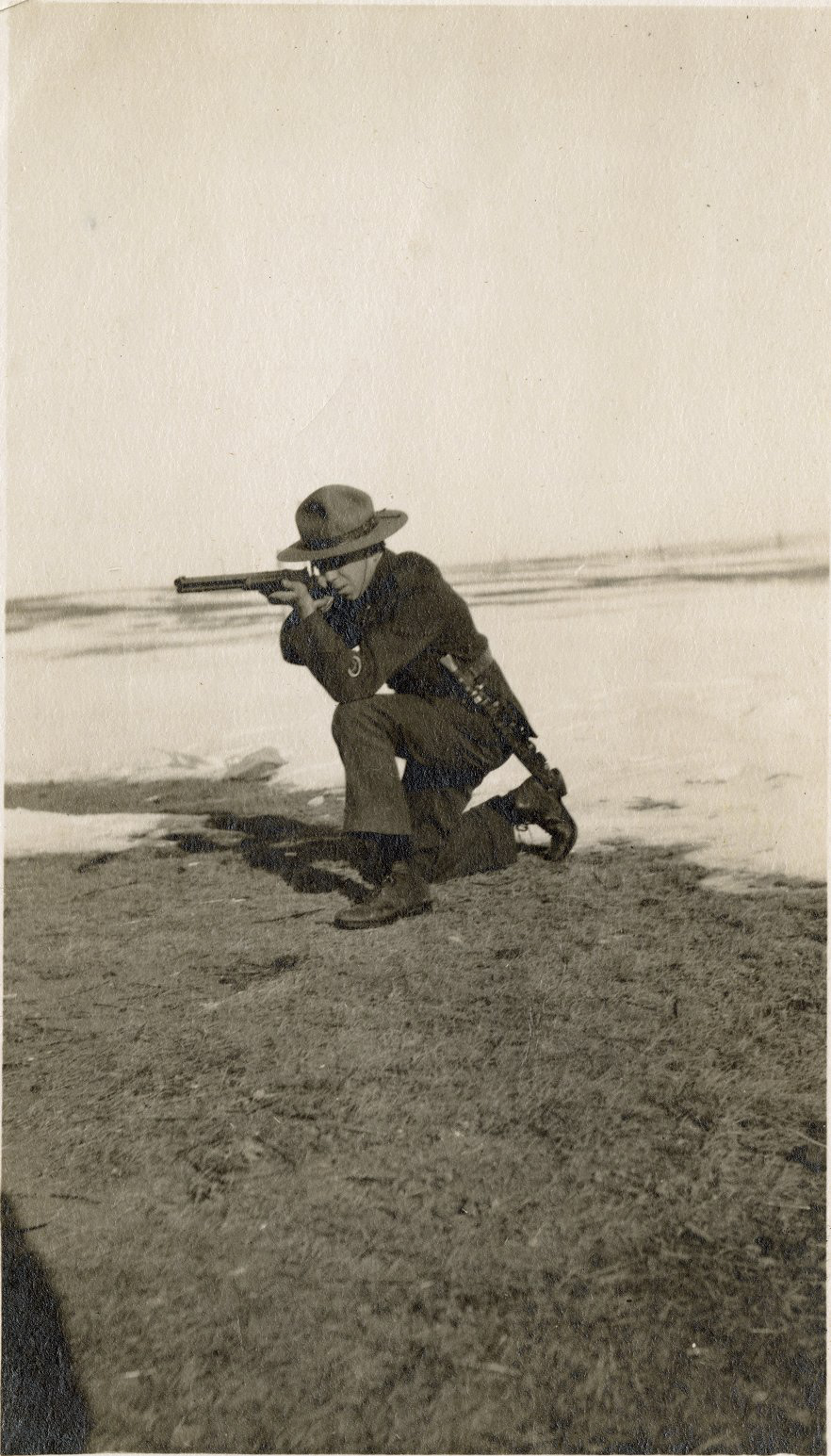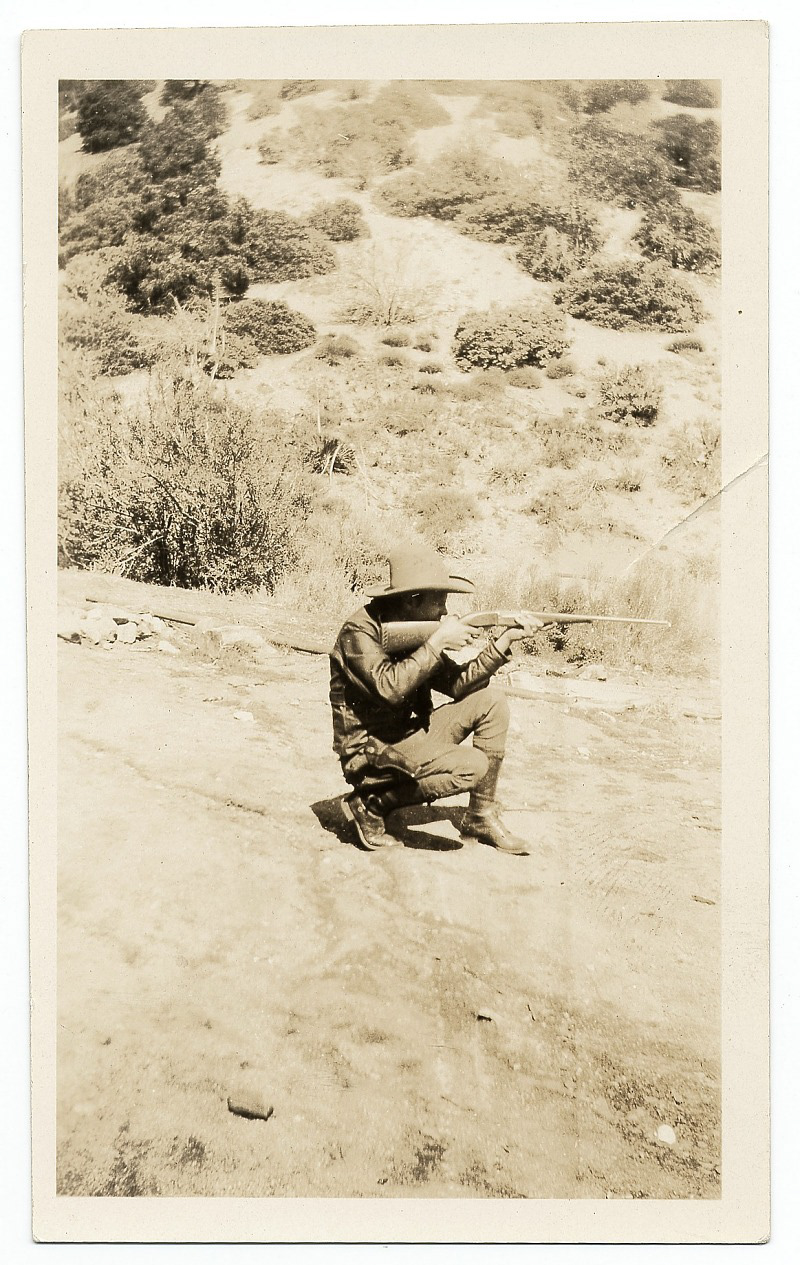
Early portrait of Clyfford Still with scout’s uniform and rifle, 1912–1920. Photographer unknown. © 2023 City & County of Denver, Courtesy Clyfford Still Museum. Museum ID CPSA.F001.S003.SB001.B001.040. Accessed on 3 October 2022.

Jackson Pollock hunting, ca. 1927. Photographer unknown. Jackson Pollock and Lee Krasner papers, circa 1914–1984. Archives of American Art, Smithsonian Institution. https://www.si.edu/object/jackson-pollock-hunting%3AAAADCD_item_3862, accessed on 3 October 2022.
"Cowboys: Abstract Expressionism, Hollywood Westerns, and American Progress" is an article written for the special issue of MDPI's Journal Arts, "The Intersection of Abstract Expressionism and Mass Visual Culture."
Abstract Expressionism has been influenced heavily by the popular theory of America’s undying, progressive spirit, originally conceived by Frederick Jackson Turner and given its most potent form in Western films. Turner’s “Frontier Thesis” was embodied in stories of John Wayne and other cowboy heroes taming the supposed edges of civilization. The mythic West as constructed by Turner and these films cemented American identity as one of exploration and innovation, with the notable condition of Indigenous Americans ceding their sovereignty. While Abstract Expressionism was commonly connected to the mythic West through the origin stories of Jackson Pollock and Clyfford Still, the critical understanding of this movement as the height of painterly achievement built on Native American precedents evinces a deeper connection to Turner’s popular Frontier theory. As critics like Clement Greenberg cast flatness as the last frontier of painting, and as artists like Pollock and Barnett Newman claimed Native American ritual practices as a part of their aesthetic lineage, Abstract Expressionism proved as effective as Hollywood Westerns in corroborating and perpetuating the idea of America’s frontier spirit.